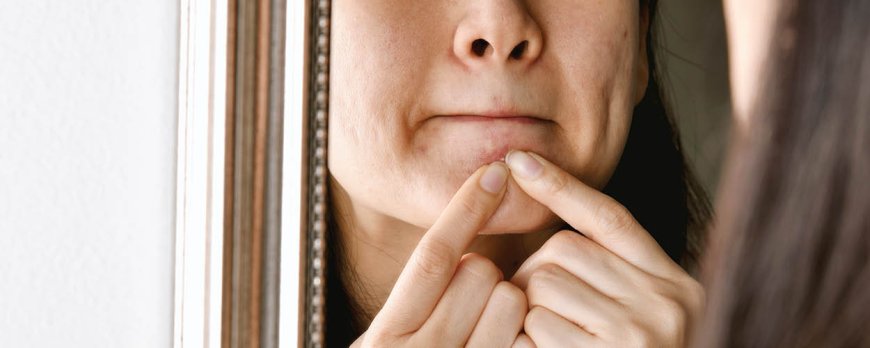What are the two most common types of acne?
Uncover the answer to 'What are the two most common types of acne?' and gain insights into these prevalent skin conditions for better care and prevention.
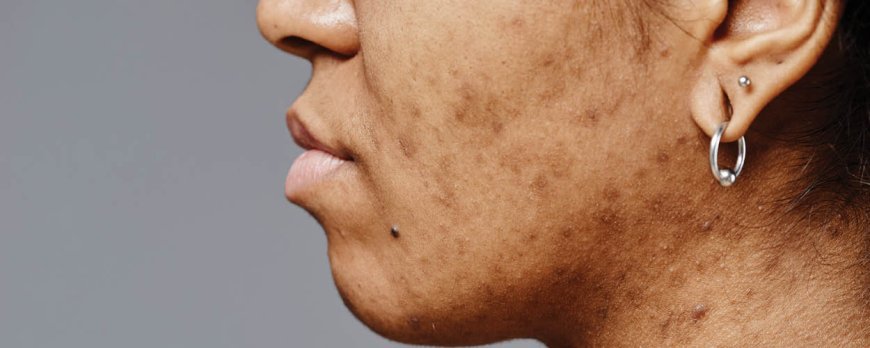
What are the two most common types of acne?
Acne is a prevalent skin condition that manifests in various forms, but the two most common types are non-inflammatory acne and inflammatory acne. Non-inflammatory acne includes blackheads and whiteheads, which are clogged pores that do not cause swelling. Blackheads are open pores, while whiteheads are closed. On the other hand, inflammatory acne involves inflammation and swelling due to the presence of bacteria. This category includes papules, pustules, nodules, and cysts, which are more severe and painful than non-inflammatory acne. Treatment options for acne vary depending on the type and severity.
Key Takeaways:
- The two most common types of acne are non-inflammatory acne (blackheads and whiteheads) and inflammatory acne (papules, pustules, nodules, and cysts).
- Non-inflammatory acne does not cause swelling and consists of clogged pores that are open or closed.
- Inflammatory acne involves inflammation and swelling due to the presence of bacteria.
- Papules are red and inflamed bumps, pustules have a white tip and contain pus, nodules are larger and more painful inflamed lesions, and cysts are large, fluid-filled bumps beneath the skin's surface.
- Treatment options for acne vary depending on the type and severity.
Understanding Non-Inflammatory Acne
Non-inflammatory acne is a type of acne that does not involve swelling, and it is typically categorized into two subtypes: blackheads and whiteheads. These types of acne are considered mild compared to inflammatory acne. They are characterized by clogged pores caused by the excessive production of oil and dead skin cells. Understanding the different types of non-inflammatory acne can help in determining appropriate treatment methods.
1. Blackheads: Also known as open comedones, blackheads are small, dark bumps that appear on the surface of the skin. They occur when the pores are partially clogged, allowing the trapped oil and dead skin cells to oxidize and turn dark. Contrary to popular belief, the dark color is not due to dirt but rather a reaction between the oil and air.
2. Whiteheads: Often referred to as closed comedones, whiteheads are small, flesh-colored bumps that form when the pores are completely blocked by oil and dead skin cells. Unlike blackheads, whiteheads have a closed surface, which prevents the trapped substances from oxidizing. They are typically harder to extract and may be more difficult to treat compared to blackheads.
While non-inflammatory acne may not be as severe as its inflammatory counterpart, it can still cause distress and discomfort. It is important to implement a consistent skincare routine that targets the root causes of acne, such as excess oil production and clogged pores. Additionally, maintaining a healthy lifestyle, including a balanced diet and stress management, can contribute to overall skin health and reduce the occurrence of acne breakouts.
Blackheads: The Visible Pore Clogs
Blackheads, a common form of non-inflammatory acne, occur when pores become clogged with excess sebum and dead skin cells, resulting in visible darkened spots on the skin's surface. These small bumps are characterized by open clogged pores, hence their distinct appearance.
While blackheads are not typically associated with inflammation or swelling, they can still be a source of frustration for those dealing with acne. The accumulation of sebum and debris in the pores creates an ideal environment for bacteria to thrive, leading to potential breakouts and further acne development if left untreated.
To effectively manage blackheads, it's important to adopt a consistent skincare routine that includes gentle exfoliation and regular cleansing. This helps to remove excess oil, dead skin cells, and other impurities that can contribute to the formation of blackheads. Additionally, incorporating products containing salicylic acid or benzoyl peroxide can be beneficial in reducing clogged pores and preventing the formation of new blackheads.
It is essential to avoid squeezing or picking at blackheads, as this can lead to inflammation, scarring, and potential infection. Instead, it is recommended to seek professional advice from a dermatologist who can provide tailored treatment options based on individual needs and severity of the condition.
Whiteheads: The Closed Pore Clogs
Whiteheads, another type of non-inflammatory acne, are similar to blackheads but differ in that the clogged pores remain closed, resulting in small, flesh-colored bumps. These bumps are formed when dead skin cells, oil, and bacteria accumulate inside the pore, blocking it. Unlike blackheads, which are open to the surface and exposed to air, whiteheads are closed off, preventing the contents from oxidizing and turning black.
Whiteheads can appear on any part of the body with hair follicles, but they are most commonly found on the face, particularly in the T-zone. They are often accompanied by other symptoms of non-inflammatory acne, such as blackheads and small pimples. While whiteheads are generally not painful, they can be cosmetically bothersome and may lead to self-consciousness, especially when they occur in visible areas.
It is important to note that squeezing or picking at whiteheads can worsen the condition, potentially leading to inflammation and scarring. Instead, proper skincare and gentle cleansing techniques are recommended to manage and prevent whiteheads. Regular exfoliation and the use of non-comedogenic skincare products can help keep the pores clear and minimize the occurrence of whiteheads.
Treatment Options for Whiteheads:
- Topical retinoids: These vitamin A derivatives help to unclog pores and promote cell turnover, preventing the formation of whiteheads.
- Benzoyl peroxide: This ingredient has antibacterial properties and can be used to kill the bacteria that contribute to acne formation. It is available over-the-counter in various formulations.
- Salicylic acid: This beta hydroxy acid exfoliates the skin and helps to remove dead skin cells, keeping the pores clear and preventing whiteheads.
- Professional extraction: In some cases, a dermatologist may perform a controlled extraction to remove whiteheads and minimize the risk of scarring.
If whiteheads persist or worsen despite at-home treatments, it is advisable to seek professional guidance from a dermatologist. They can provide an accurate diagnosis and recommend an individualized treatment plan based on the severity of the acne and the patient's specific needs.
Understanding Inflammatory Acne
Inflammatory acne is a more severe form of acne that involves swelling and inflammation, and it comprises several types of lesions. These types of acne lesions are characterized by redness, tenderness, and the presence of pus or fluid. Understanding the different classifications of inflammatory acne is crucial in determining the appropriate treatment approach.
Papules: Red and Inflamed Bumps
Papules are small, red, and raised bumps that are typically tender to the touch. They occur when the walls of the pores break down, leading to inflammation. Papules are often the result of bacteria and excess sebum becoming trapped within the pores. These lesions do not contain pus and should not be squeezed or popped, as it can worsen the inflammation and potentially cause scarring.
Pustules: Pimple With a White Tip
Pustules are another common type of inflammatory acne lesion. These are characterized by a red base with a visible white or yellow center. Pustules contain a mixture of dead skin cells, bacteria, and white blood cells. Squeezing or popping a pustule can lead to further infection and scarring. It is important to let them heal naturally or seek professional treatment.
Nodules: Painful and Larger Inflamed Lesions
Nodules are larger, deeper acne lesions that develop beneath the surface of the skin. They are firm to the touch and can be quite painful. Nodules are the result of a buildup of bacteria, sebum, and dead skin cells deep within the pores. These lesions often require medical intervention, such as prescription medications, to effectively treat them and prevent scarring.
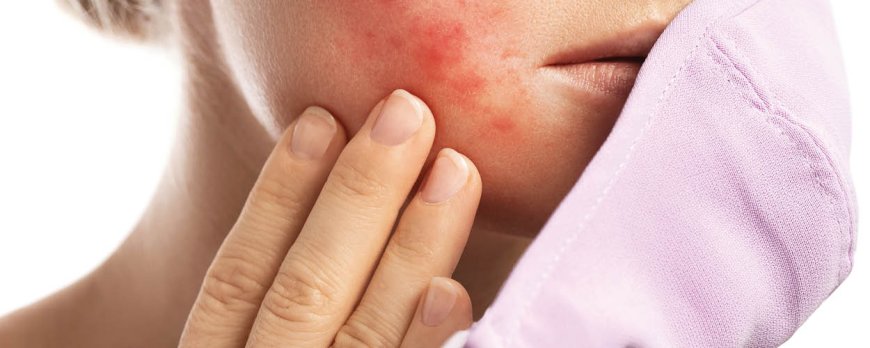
Papules: Red and Inflamed Bumps
Papules are small, red, and inflamed bumps that develop on the skin as a result of inflammatory acne, often caused by the presence of bacteria. These lesions can be particularly frustrating for individuals dealing with acne, as they are not only noticeable but also tend to be sensitive and painful to the touch.
Characterized by their raised appearance, papules can range in size from small pinpricks to larger, more prominent bumps on the skin's surface. They are typically filled with a combination of dead skin cells, oil, and bacteria that become trapped within the pore.
Treating papules requires a careful approach, as aggressive and improper handling can lead to further inflammation and potential scarring. Dermatologists often recommend gentle cleansing routines, using products that help to reduce bacteria and control oil production. Prescription medications, such as topical retinoids or antibiotics, may also be recommended to target the underlying causes of inflammation and promote healing.
To prevent the formation of papules and other types of inflammatory acne, it is essential to maintain a consistent skincare routine and avoid harsh products or scrubbing the affected area vigorously. Consulting with a dermatologist will help determine the most suitable treatment plan based on individual skin type and the severity of the condition.
Pustules: Pimple With a White Tip
Pustules are a common type of inflammatory acne characterized by a red base and a white or yellowish tip containing pus. They develop when the hair follicles become clogged with excess oil, dead skin cells, and bacteria. These painful bumps can appear anywhere on the body but are most commonly found on the face, chest, and back.
When left untreated, pustules can lead to more severe forms of acne and may cause scarring. It is important to resist the temptation to pop or squeeze them, as this can exacerbate inflammation and increase the risk of scarring. Instead, dermatologists recommend gentle cleansing with non-comedogenic products and the use of topical treatments containing ingredients like benzoyl peroxide or salicylic acid to help reduce bacteria and inflammation.
Treatment options for pustules:
- Topical acne medications: Prescription-strength creams, gels, or lotions that contain ingredients like retinoids, antibiotics, or combination therapy can be used to treat pustules.
- Oral medications: In more severe cases, oral antibiotics, hormonal therapy, or isotretinoin may be prescribed by a dermatologist to target the underlying causes of acne.
- In-office treatments: Dermatologists may perform procedures like extractions, chemical peels, or laser therapy to help clear pustules and improve the overall appearance of the skin.
It is important to remember that everyone's acne is unique, and what works for one person may not work for another. Consulting with a dermatologist is crucial to accurately diagnose and treat acne, including pustules, taking into account individual factors such as skin type, lifestyle, and medical history. With the right treatment approach, pustules and other forms of acne can be effectively managed and minimized.
Nodules: Painful and Larger Inflamed Lesions
Nodules are larger, painful, and inflamed lesions that develop deep within the skin and are typically associated with severe inflammatory acne. They are a result of the overproduction of oil, which causes the hair follicles to become clogged and inflamed. Unlike other forms of acne, nodules are not easily treatable with over-the-counter medications and may require intervention from a dermatologist.
These deep-seated lesions can be quite painful and can persist for weeks or even months if left untreated. Nodules are usually red or purple in color and can be felt as firm, solid bumps beneath the skin. They often do not come to a head or contain pus like pustules and can be resistant to traditional acne treatment methods.
Treatment options for nodules may include prescription-strength medications such as oral antibiotics or isotretinoin, a powerful medication that targets the underlying causes of acne. In some cases, steroid injections may be used to reduce inflammation and promote healing.
Key Points:
- Nodules are larger, painful, and inflamed lesions that develop deep within the skin
- They are typically associated with severe inflammatory acne
- Treatment may require intervention from a dermatologist
- Options include prescription-strength medications and steroid injections
If you suspect that you have nodules or are experiencing persistent, severe acne, it is important to consult with a dermatologist. They can provide an accurate diagnosis and develop a personalized treatment plan to help manage and reduce the appearance of nodules. Remember, early intervention is key in preventing long-term scarring and promoting skin health.
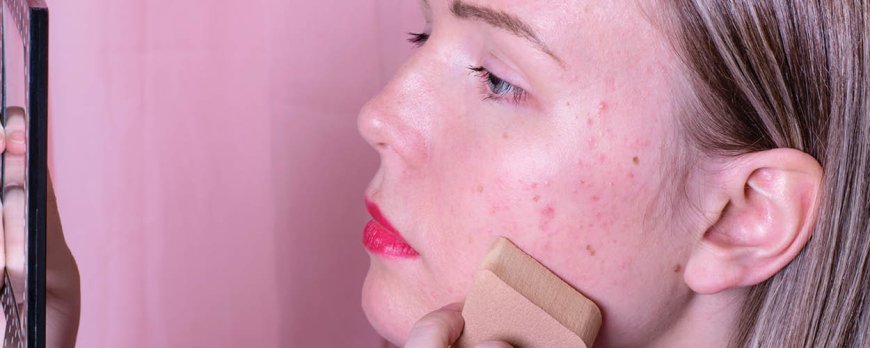
Cysts: Large, Fluid-Filled Bumps
Cysts are a severe form of inflammatory acne marked by large, painful, and fluid-filled bumps that develop beneath the surface of the skin. These deep-seated lesions are often caused by a combination of factors, including excess oil production, hormonal imbalances, and bacterial infection. Cysts can be both physically and emotionally distressing, as they tend to be more persistent and can leave behind scars if not treated properly.
Unlike other types of acne, cysts are not easily visible on the surface of the skin. They typically appear as large, red, and swollen bumps that are often painful to the touch. Due to their deep location within the skin, cysts are known to take a longer time to heal and may require professional intervention to minimize their severity and prevent future breakouts.
Treatment Options for Cysts
- Topical medications: Dermatologists may prescribe topical retinoids or antibiotics to reduce inflammation and control bacterial growth. These medications are typically applied directly to the affected areas and can help promote healing and prevent further cyst formation.
- Oral medications: In more severe cases, oral medications such as oral antibiotics, hormonal therapy, or isotretinoin may be recommended. These medications work to target the underlying factors contributing to cystic acne and can significantly improve symptoms and prevent future outbreaks.
- In-office procedures: In certain cases, dermatologists may perform procedures like intralesional corticosteroid injections to reduce inflammation and promote faster healing of cysts. Additionally, procedures like chemical peels or laser therapy may be used to improve the overall appearance of the skin and minimize scarring.
It's important to note that cystic acne treatment should be tailored to the individual and their specific needs. Consulting with a dermatologist is crucial in developing an effective and personalized treatment plan. They can assess the severity of the acne, identify potential triggers, and recommend the most appropriate course of action to address cystic acne and minimize its impact on the skin.
Treatment Options for Different Types of Acne
Effective treatment for acne depends on the specific type and severity of the condition, and it often involves a combination of skincare, topical treatments, oral medications, and professional interventions. Here are some common treatment options for non-inflammatory and inflammatory acne:
Non-Inflammatory Acne:
- Topical Retinoids: These prescription medications help unclog pores and prevent the formation of new blackheads and whiteheads.
- Salicylic Acid: Over-the-counter products containing salicylic acid can be helpful in exfoliating the skin and reducing the appearance of blackheads.
- Extraction: Dermatologists can perform extractions to manually remove stubborn blackheads and whiteheads.
Inflammatory Acne:
- Topical Antibiotics: These medications help reduce inflammation and kill acne-causing bacteria.
- Oral Antibiotics: In severe cases, oral antibiotics may be prescribed to target the bacteria causing inflammation.
- Isotretinoin: This powerful oral medication is reserved for severe cases of acne and works by reducing oil production, killing bacteria, and preventing clogged pores.
- Intralesional Injections: Dermatologists may inject corticosteroids into larger, painful acne lesions to reduce inflammation and promote healing.
It's important to consult with a dermatologist before starting any acne treatment regimen. They can assess your specific needs and recommend the most suitable course of action based on the type and severity of your acne. Additionally, practicing good skincare habits, such as gentle cleansing and using non-comedogenic products, can help in managing acne and preventing future breakouts.
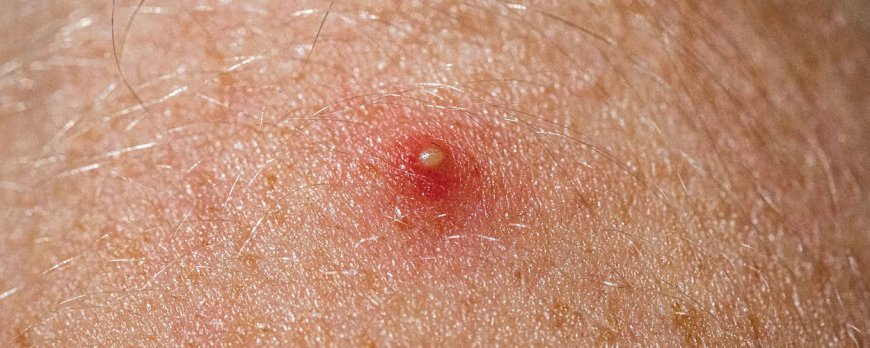
Preventing and Managing Acne
While treating acne is crucial, adopting preventive measures and implementing healthy skincare practices can help reduce the occurrence and severity of breakouts. Here are some skincare tips for acne prevention and management:
- Keep your face clean: Wash your face twice a day with a gentle cleanser to remove excess oil, dirt, and impurities. Avoid scrubbing too harshly, as it can irritate the skin.
- Moisturize: Use a non-comedogenic moisturizer to keep your skin hydrated without clogging the pores. Look for products labeled "oil-free" or "non-acnegenic."
- Avoid touching your face: Picking, popping, or squeezing acne can worsen inflammation and lead to scarring. Keep your hands away from your face to prevent the spread of bacteria.
- Protect your skin from the sun: Use a broad-spectrum sunscreen with an SPF of 30 or higher to shield your skin from harmful UV rays. Sun exposure can worsen acne and cause hyperpigmentation.
Healthy Habits for Acne Prevention
- Follow a balanced diet: Include plenty of fruits, vegetables, whole grains, and lean proteins in your diet. Limit your intake of processed foods, sugary snacks, and dairy products, as they may trigger breakouts in some individuals.
- Manage stress: Chronic stress can contribute to acne flare-ups. Practice stress-reducing techniques such as exercise, meditation, and deep breathing to keep your mind and body balanced.
- Get enough sleep: Lack of sleep can disrupt hormonal balance and increase inflammation in the body, leading to acne breakouts. Aim for 7-8 hours of quality sleep each night.
- Avoid harsh products: Avoid using harsh or abrasive skincare products that can strip the skin of its natural oils and aggravate acne. Opt for gentle, non-irritating products specifically formulated for acne-prone skin.
Remember, the key to preventing and managing acne is consistency and patience. It may take time to see improvement, but with proper care and healthy habits, you can achieve clearer, healthier skin.
Conclusion
Understanding the two most common types of acne, non-inflammatory acne and inflammatory acne, is crucial in developing effective prevention strategies and seeking appropriate treatment options. Non-inflammatory acne, which includes blackheads and whiteheads, typically does not cause swelling and is characterized by clogged pores that are either open or closed. On the other hand, inflammatory acne involves inflammation and swelling due to the presence of bacteria.
Within the category of non-inflammatory acne, blackheads are visible pore clogs that appear as dark spots on the skin. They are caused by excess oil, dead skin cells, and debris that accumulate in the hair follicles. Whiteheads, on the other hand, are closed pore clogs that appear as small, flesh-colored bumps. They occur when the trapped oil and debris are unable to escape.
Inflammatory acne, on the other hand, presents a different set of challenges. Papules are red and inflamed bumps that develop when the walls around the clogged pores break down, leading to inflammation. Pustules, on the other hand, have a white tip and contain pus. Nodules are larger and more painful inflamed lesions that form deeper within the skin. Lastly, cysts are characterized by their large, fluid-filled bumps beneath the skin's surface.
Treatment options for acne vary depending on the type and severity. Non-inflammatory acne can often be managed through proper skincare routines, including regular cleansing, exfoliation, and the use of topical treatments. Inflammatory acne may require additional intervention, such as prescription medications or procedures performed by a dermatologist. It is essential to consult with a healthcare professional to create a personalized treatment plan that addresses individual needs and concerns.
FAQ
What are the two most common types of acne?
The two most common types of acne are non-inflammatory acne and inflammatory acne.
What is non-inflammatory acne?
Non-inflammatory acne includes blackheads and whiteheads. It does not cause swelling and consists of clogged pores that are open (blackheads) or closed (whiteheads).
What is inflammatory acne?
Inflammatory acne involves inflammation and swelling due to the presence of bacteria. It includes papules, pustules, nodules, and cysts.
What are blackheads?
Blackheads are visible pore clogs that appear as open comedones. They are a type of non-inflammatory acne.
What are whiteheads?
Whiteheads are closed pore clogs that appear as closed comedones. They are a type of non-inflammatory acne.
What are papules?
Papules are red and inflamed bumps. They are a type of inflammatory acne.
What are pustules?
Pustules are pimples with a white tip and contain pus. They are a type of inflammatory acne.
What are nodules?
Nodules are larger and more painful inflamed lesions. They are a type of inflammatory acne.
What are cysts?
Cysts are large, fluid-filled bumps beneath the skin's surface. They are a type of inflammatory acne.
What are the treatment options for acne?
Treatment options for acne vary depending on the type and severity. It is best to consult with a dermatologist for personalized treatment advice.
How can acne be prevented and managed?
Acne prevention and management can be achieved through proper skincare routines, diet considerations, and lifestyle changes. It's important to find a routine that works for you and consult with a dermatologist if needed.
